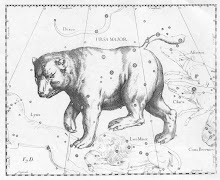It’s just after noon on Monday, January 6 (Epiphany, the
supposed “Twelfth Day of Christmas,” or Orthodox Chrtistmas, depending on
whether you prefer your calendar Gregorian or Julian), and we’re not at the
office today. Not only Purdue, but much
of the State of Indiana, is closed or under travel warnings (only “essential
personnel” or “emergency travel” permitted), and as devoted to INSGC as I might
be, it’s more important to stay home and safe with -15F Fahrenheit temperatures. From a science geek perspective, there’s much
to get excited about: does the 12 days of Christmas come from the gap rectified
by the Gregorian calendar adjustment? Or
is it an older reference to the Druidic belief of the Solstice (“sun standing still,”
or relatively consistent length of day) as a 12-day period? And what about that temperature? Zero Celsius is the temperature at which
fresh water freezes. Did you know that
zero Fahrenheit is the freezing temperature for the saltiest water Mr. Fahrenheit
tested? That’s why, of course, salt on
your sidewalks or roads won’t work today—the water refreezes, no matter what
salt concentration you use.
All of this is due to what is described as a massive “polar
vortex,” or shift of very cold air normally kept in northern Canada and Alaska,
now affecting large areas of the “lower 48” US states.
 |
| Satellite image of storm and vortex behavior, ~January 3. Image from NASA, via BBC. |
The temperatures as a result are some of the coldest in recorded history here, approaching levels not seen in Indiana since the 1940s. This is on top of a massive snowstorm (not
quite a blizzard, since that term is reserved for winds over 35 mph along with
heavy snow totals or rates of snowfall, which we didn’t quite get) that has
left about 10 inches of snow outside my front door. In other words, fairly extreme weather.
 |
| Extreme US weather warnings, Jan 5. Magenta references winter storm or blizzard warnings; cyan references wind chill warnings. Image from NOAA. |
As severe as this weather is, imagine a world of 50 or 100
years ago or more, where long-range forecasts and telecommunications advising
residents and travelers of “extreme threats” to life were not available. This is one of the responses I have to people
who say that NASA and STEM aren’t relevant to their lives. Satellite images, computer models, satellite
transmission of news broadcasts, and maybe even the emergency blankets and
improved battery technologies in your home or car, are all due to the
technological advances inspired by the missions to the Moon in the 1960s.
It was actually those missions that were the original
intention of my blog entry, before this weekend’s storm. Over Christmas, with family and friends
sharing warmth and companionship, I teared up over two items:
- · the closing scene of It’s a Wonderful Life, with the family and neighbors in the house, and George Bailey’s younger brother raising a toast to “the richest man in town”;
- · the broadcast of the Apollo 8 Christmas Eve broadcast in 1968, wishing peace and a good night to “all the people on the Good Earth”.
The picture, Earthrise,
from Apollo 8 taken by the crew (including Indiana native, Frank Borman) is now
considered one of the most important photographs ever taken.
 |
| “Earthrise,” NASA photo AS8-14-2383. |
These photos are the first to give us a new perspective on
the Earth, its relative tininess and fragility, and how the natural events and
processes of the Earth affect us profoundly (as we have learned this weekend,
and continue to learn and experience).
It’s that Christmas Eve event in 1968 that drove me to study engineering, and
seek out a career path with NASA research, and eventually take on this role
with INSGC.
So, from December 25, to January 6, NASA and INSGC remain
very strongly on my mind and in my awareness.
Once we get back to work, we’ll be continuing to assist those interested
in applying for our INSGC program awards and scholarships. I’m very pleased to note that INSGC has
already received funding for the 2014-15 program year starting in May, so our
awards process will be continuing on schedule.
I was thrilled to have the opportunity to talk a little about INSGC on
our local public radio station, WBAA.
The interview was broadcast last week on December 30, (the “six geese
a-laying” day, I believe), and you can read
and hear it here.
Be careful, stay warm and sheltered, and my continued good
wishes to you during our extended winter holiday.





I would be very interested to know what you think about a upcoming space simulation called "Star Citizen" so far the project has received nearly $38 million in crowd funding..find out more http://www.starcitizenreview.com
ReplyDelete